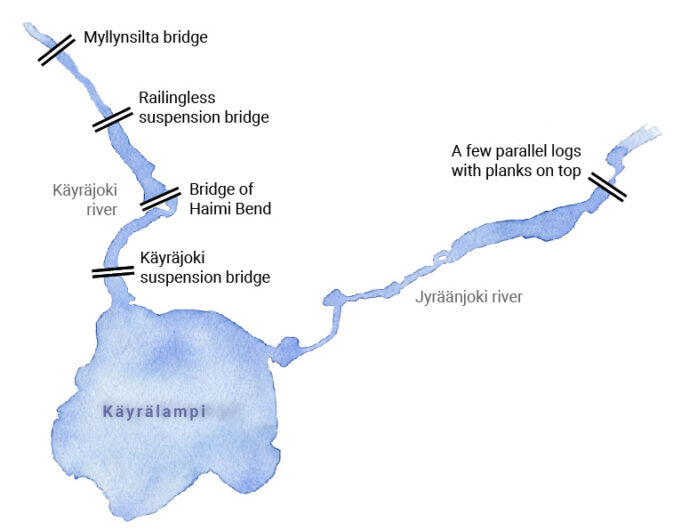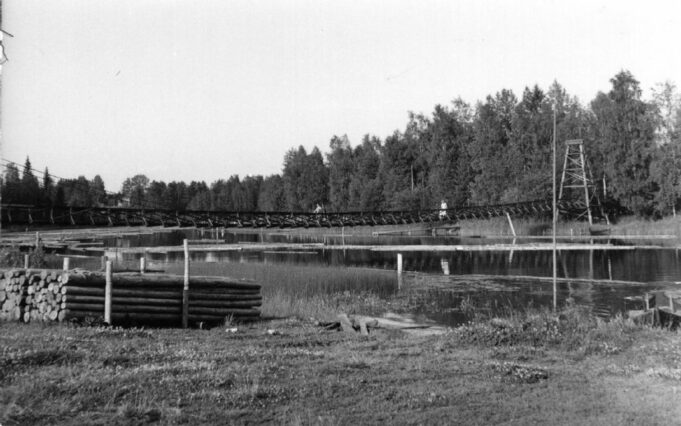Historical Bridges
Timber floating was an important livelihood from the late 19th century until the mid-20th century. In the summer, rivers were full of logs, and bridges and other structures were built over the waterways to make crossing easier. Several bridges were built during the log-driving season to facilitate passage from one bank to the other on Jyräänjoki river, which flows into Käyrälampi lake, and on the adjacent Käyräjoki river, the last part of which is called Jokelanjoki river.

The bridge next to you was completed in 2023. At this same spot, during the years of the log-driving season, there was a suspension bridge here, called the Bridge of Haimi Bend, which made it easier for the log drivers to cross. The old bridge fell into disrepair in the 1950s.
Another bridge built for the log drivers was the Käyräjoki suspension bridge, built in 1947, which was an important access route between the different stations. One end of the bridge was at the foreman’s main dwelling, “Töttörö”, and the other in the summer cabin area. In addition to the log drivers, the bridge was also popular with nearby residents.

Myllynsilta bridge, next to the Jokela mill, was of course an important crossing point for the log drivers, but it also served as a shortcut for the villagers. Jokela mill was closed down in 1955 and the bridge next to it was demolished. A new bridge was built on the site and is now in active use. In addition, the original mill building and dam have been given a new lease of life through restoration, and today the area is one of Valkeala’s cultural attractions.
A railingless suspension bridge was built between the mill bridge and the adjacent new bridge for the use of the workers during the log-driving season, but it was demolished in the early 1960s when the driving stopped. The second crossing point, used only by log drivers, was on Jyräänjoki river near the log drivers’ station and rest stop. As the river was narrow at that point, a few parallel logs with planks on top were sufficient to allow them to cross.
Although the days of log driving are history, you can stop at the bridge and maybe feel a sense of a bygone era. Look out over the river and see the logs floating by and the log drivers guiding them.
Updated 7.2.2024